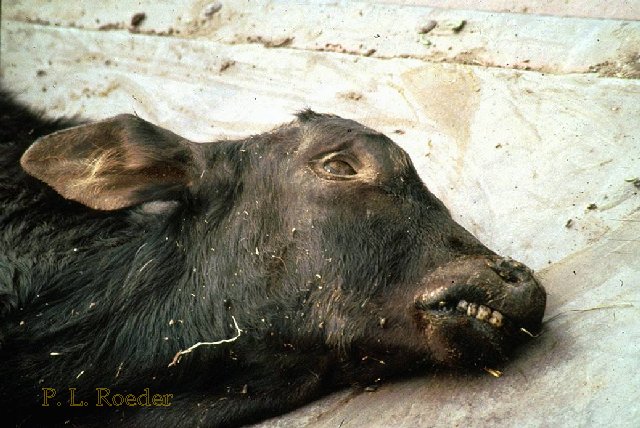Rinderpest
- Also known as cattle plague.
- Belongs to Paramyxoviridae family.
- Acute, highly contagious disease of cattle.
- Characterized by high fever, Necrotic stomatitis, diarrhoea and high mortality.

a) Etiology:
- Morbili virus of Paramyxoviridae family.
- Susceptible animal includes cow, buffalo, goat, sheep.
- A close proximity is necessary for transmission of disease.
b) Spread of disease:
- Sweat, urine, Nasal discharge, faeces, etc.
- Infection occurs by inhalation of infected droplets and ingestion of contaminated feed.
c) Symptoms:
- High fever ( 104-1050F)
- Oculonasal discharge
- Severe diarrhoes accompanied by dehydration, emaciation ( Wasting of muscles) and abdominal pain.
- Ulcerative stomatitis, excessive salivation.

d) Various stages of rinderpest
i) Incubation stage:
- 2-15 days
- Virus finds its way to be virulent
ii) Prodromal stage:
- Fever followed by mucosal lesions
- Profuse serous nasal and lacrymal discharge
iii) Mucosal stage:
- Necrosis of mucous membrane
iv) Convalescent stage:
- Mucosa resumes is integrity.
- Diarrhoea may continue.
e) Diagnosis of rinderpest:
i) Presumptive diagnosis:
- On the basis of history of outbreak, clinical findings, gross lesions.
ii) Partial confirmatory diagnosis:
- Examination of WBC :- <4000 /ml.
- Presence of intranuclear and intracytoplasmic inclusions bodies.
iii) Confirmatory diagnosis:
- Isolation and identification of virus
- Detection of antibody by ELISA test.
iv) Differential diagnosis:
- FMD
- Blue tongue disease
- Mucosal disease
f) Transmission of disease:
- Infected droplets
- Close proximity between healthy and infected animal.
- Ingestion of contaminated food.
g) Treatment of disease:
- Rinderpest antiserum is injected 1 ml/kg body weight I/V at early stage or first day of fever.
- Antibiotics and chemotherapeutics to control secondary bacterial or protozoal infection.